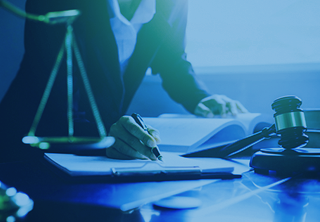PTAB Denies Motion to Amend Claims After Determining the Term "High Pressure" is Indefinite
- May 16, 2023
- Article
The Patent Trial and Appeals Board denied U.S. Well Services, LLC’s (the Patent Owner) Motion to Amend the claims of U.S. Patent No. 10,254,732 B2 (the ‘732 Patent) during inter partes review after determining that the term “high pressure” as used in the amended claims was indefinite under 32 U.S.C. §112(b). See Haliburton Energy Services, Inc., v. U.S. Well Services, LLC, IPR2022-00074, Final Written Decision Granting in Part and Denying in Part Patent Owner’s Revised Non-Contingent Motion to Amend at 3. The Patent Owner moved to cancel claims 1-13 and substitute the canceled clams with claims 14-26. As a preliminary matter, the Board found that the Patent Owner met the statutory threshold for amending the claims by ruling that the recited camera data bypass feature did not constitute “new matter.” Id. at 21.
Claim 14 recites a system for use with a fracturing operation, comprising “a plurality of…pumps fluidly connected to a well…and configured to pump fluid into the well at high pressure so that the fluid passes from the well into the formation, and fractures the formation” (emphasis added). Id. at 7. Haliburton challenged claim 14 arguing that the term “high pressure” was an indefinite term of degree because the “baseline” of the term was unclear in the art of fracking. Id. at 26. The Board reiterated that under Interval Licensing, terms of degree are considered definite when the context of the invention provides enough certainty to a person of ordinary skill in the art. The Board also pointed to Liberty Ammunition, Inc. when stating that terms of degree are considered indefinite when the term’s “baseline” is unclear.
The Board ultimately concluded that the ‘732 Patent did not provide any guidance for what the patent meant by “high pressure.” Decision at 27. The Board found that the ‘732 Patent did not disclose a minimum pressure, nor did the ‘732 Patent describe how to measure pressure to determine if “high pressure” was being employed. The Board also noted that the prosecution history did not address the meaning of “high pressure.”
The Patent Owner was forced to rely on its Expert Witnesses, who gave conflicting answers when proffering pressure ranges that might meet the definition of “high pressure” as used in claim 14. The Patent Owner’s first expert, Mr. William Marscher, testified that a person of ordinary skill in the art would estimate “high pressure” as between 5,000 and 15,000 psi. Mr. Marscher also indicated that what was considered “high pressure” would also depend on the field, pointing out that in the waterjet cutting industry “high pressure” ranged from 20,000 to 40,000 psi. But Mr. Marscher concluded his statement that in the fracking industry, “high pressure” would range from 5,000 to 15,000 psi. Id. at 28.
The Patent Owner’s second expert, Mr. Robert Schaff, testified that a person of ordinary skill in the art of fracking would consider “high pressure” to range from 8,000 to 12,000 psi. Id. at 29. Mr. Schaaf refuted Mr. Marscher’s testimony, saying that a person of ordinary skill in the art of fracking would not consider 5,000-15,000 psi to be “high pressure.” Id. Mr. Schaaf also explained that the pressure needed to fracture the formation often depended on the formation itself and that certain fracking jobs cold be done as “pressures that are not high pressure.” Id.
Faced with no information in the ‘732 Patent itself that clarified what “high pressure” meant, and the conflicting ranges offered by the Patent Owner’s own experts, the Board agreed with the Petitioner’s Expert, Dr. Robert A. Durham, who testified that there generally was no consensus as to what ranges qualified as “high pressure.” Id. at 30.
The Board’s ruling should serve as a reminder that if a term of degree is used in the claims, the specification needs to provide a baseline definition for that term of degree to avoid indefiniteness issues.
Recent Publications
Federal Circuit Holds Prosecution History Disclaimer Applicable to Design Patents
by Sana Tahir, Law Clerk and Andrew Ollis, Partner










 Counseling & Strategic Advice
Counseling & Strategic Advice IP Transactions
IP Transactions Litigation
Litigation PTAB Proceedings
PTAB Proceedings Technology Transfer
Technology Transfer Trademark & Designs
Trademark & Designs U.S. Patent Procurement (Application Drafting & Prosecution)
U.S. Patent Procurement (Application Drafting & Prosecution)







